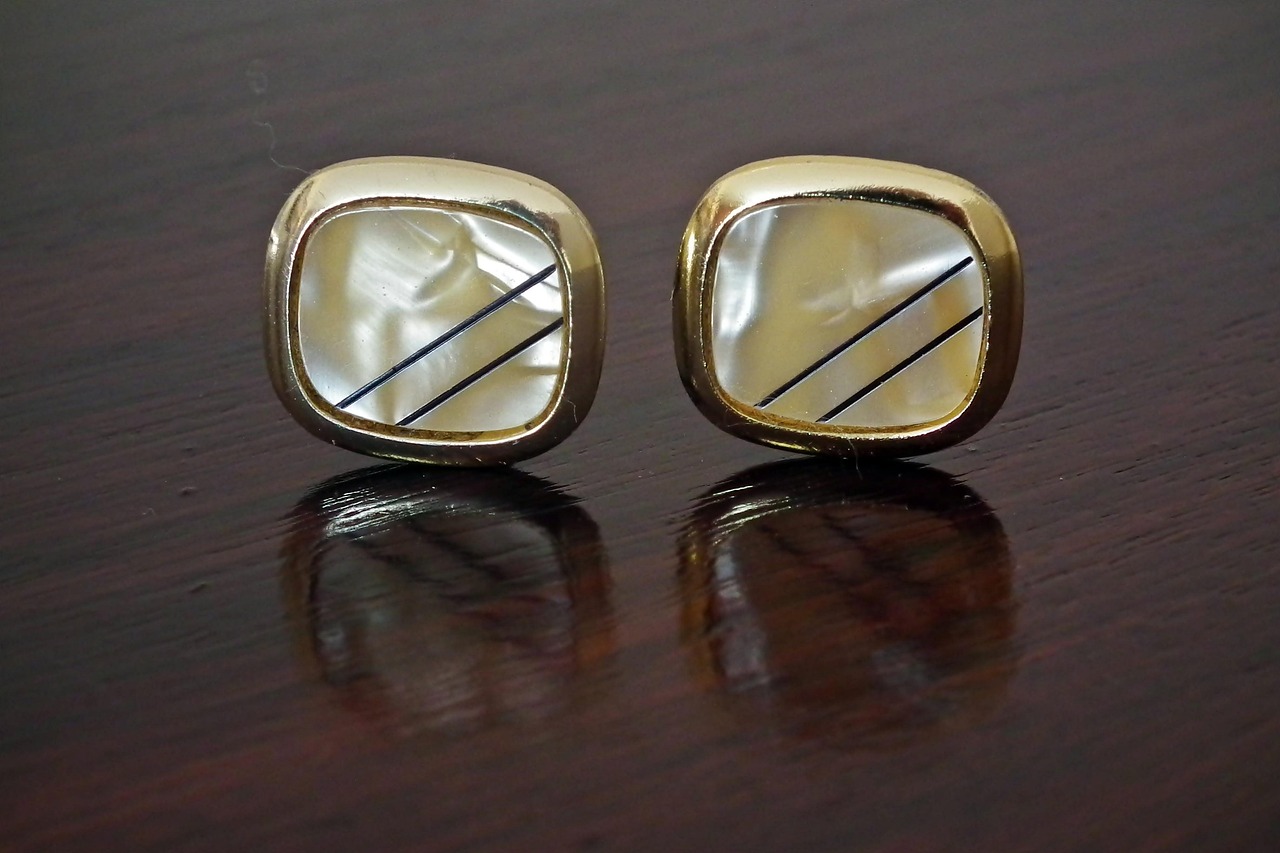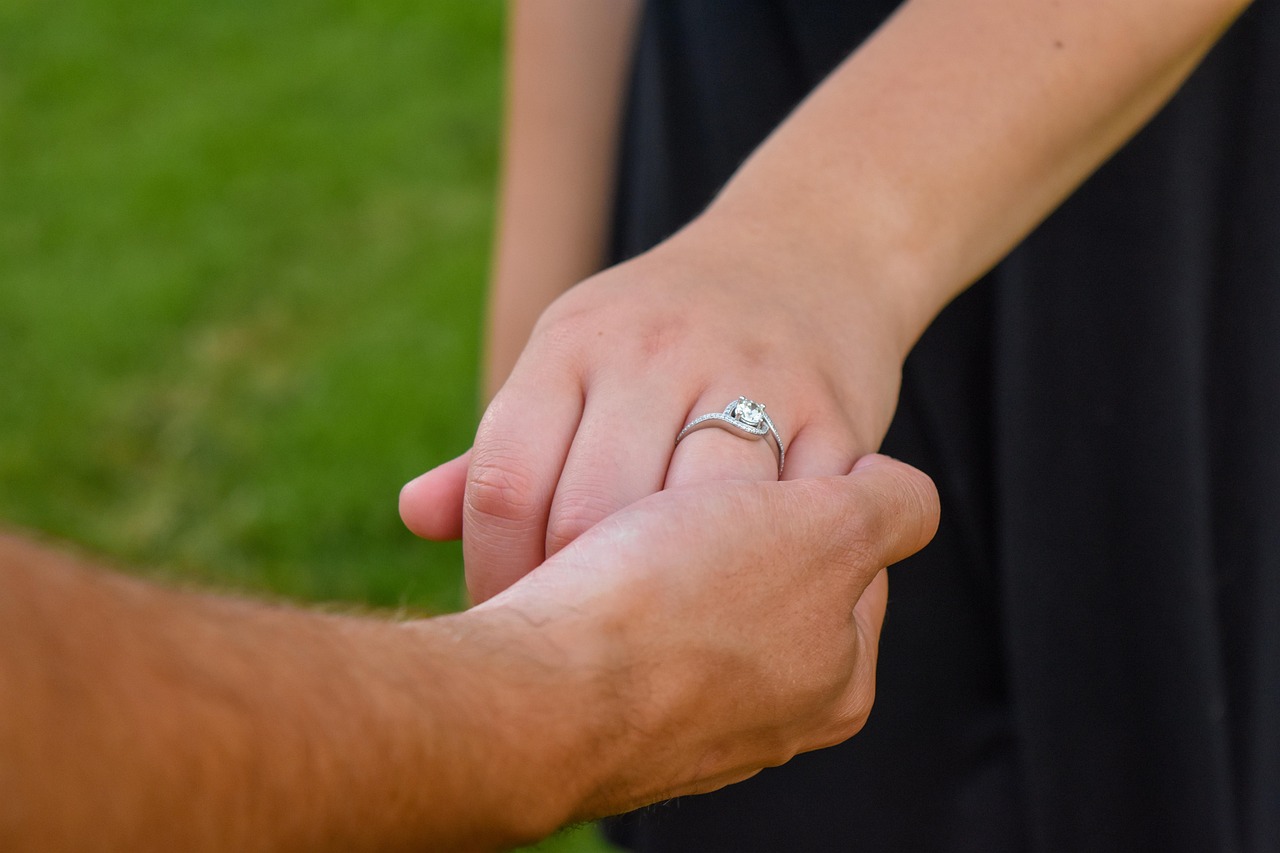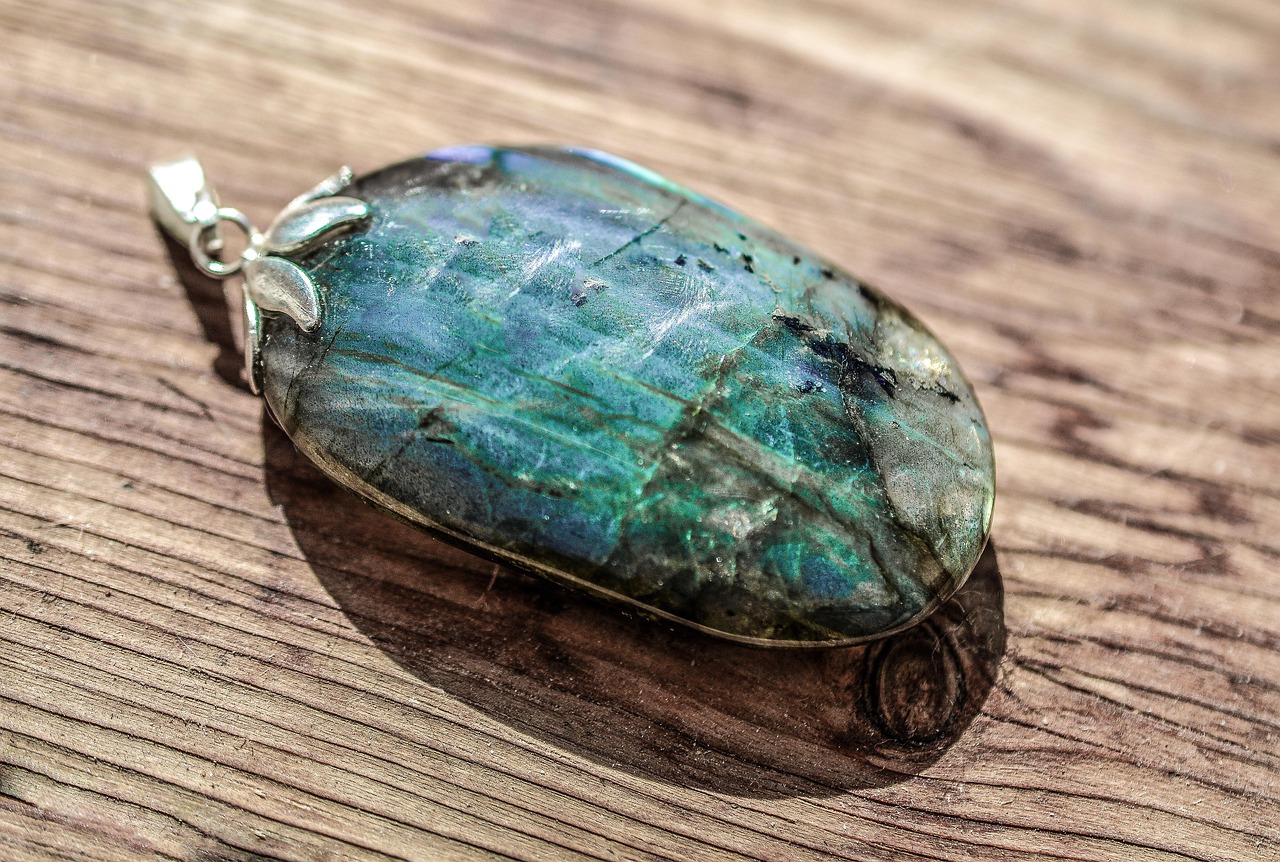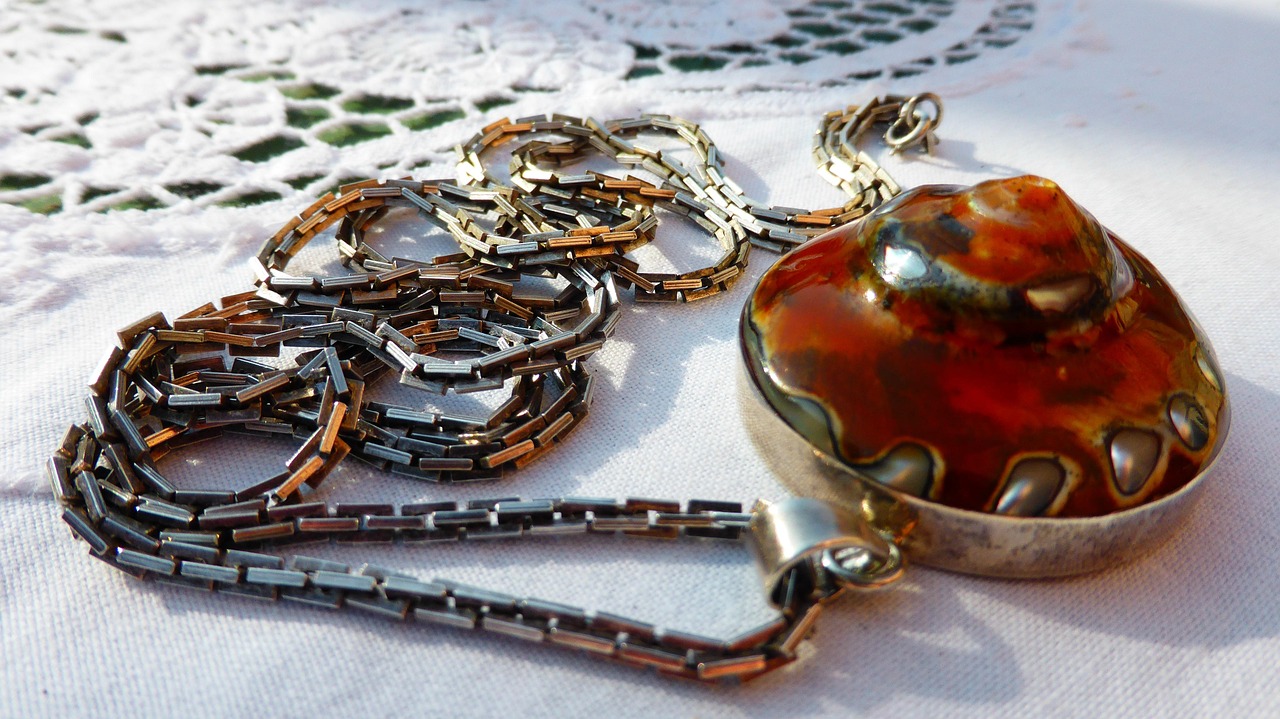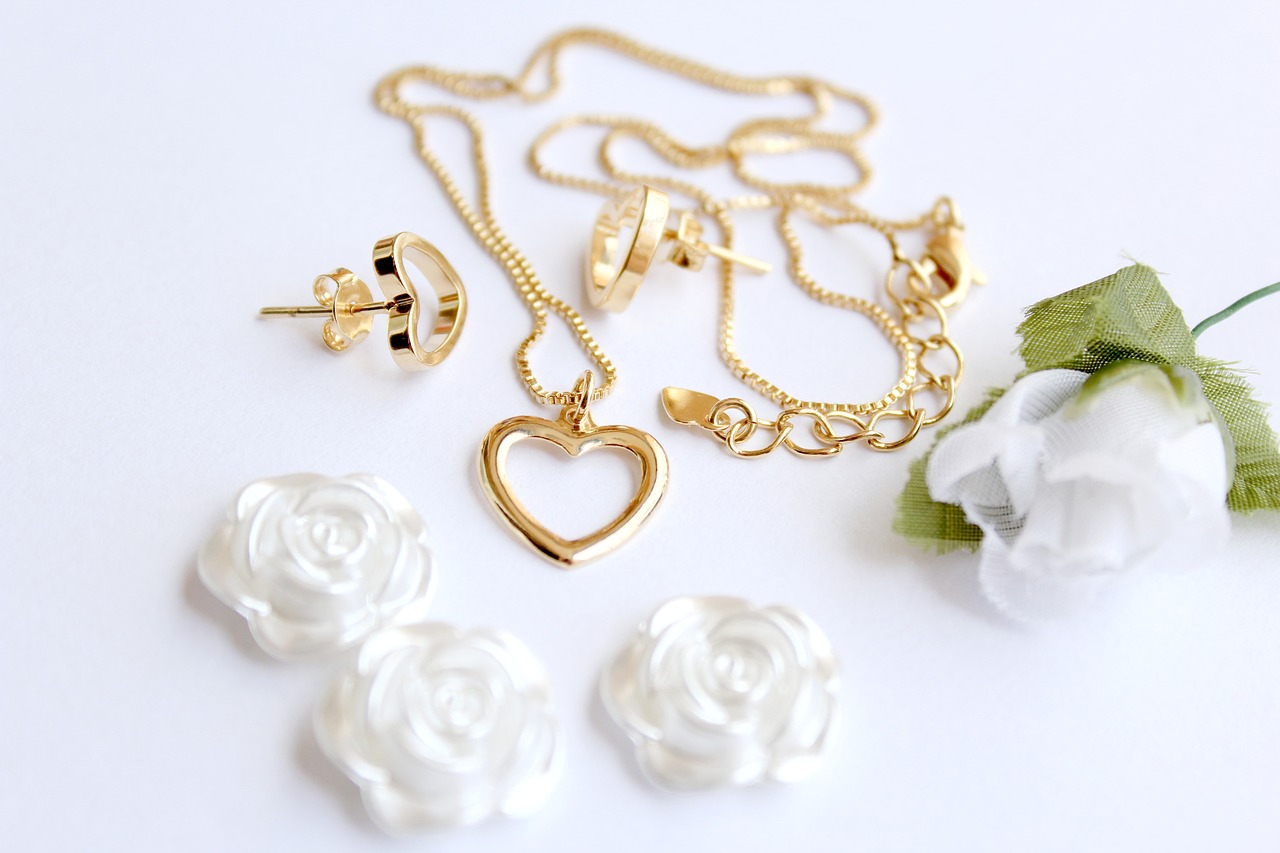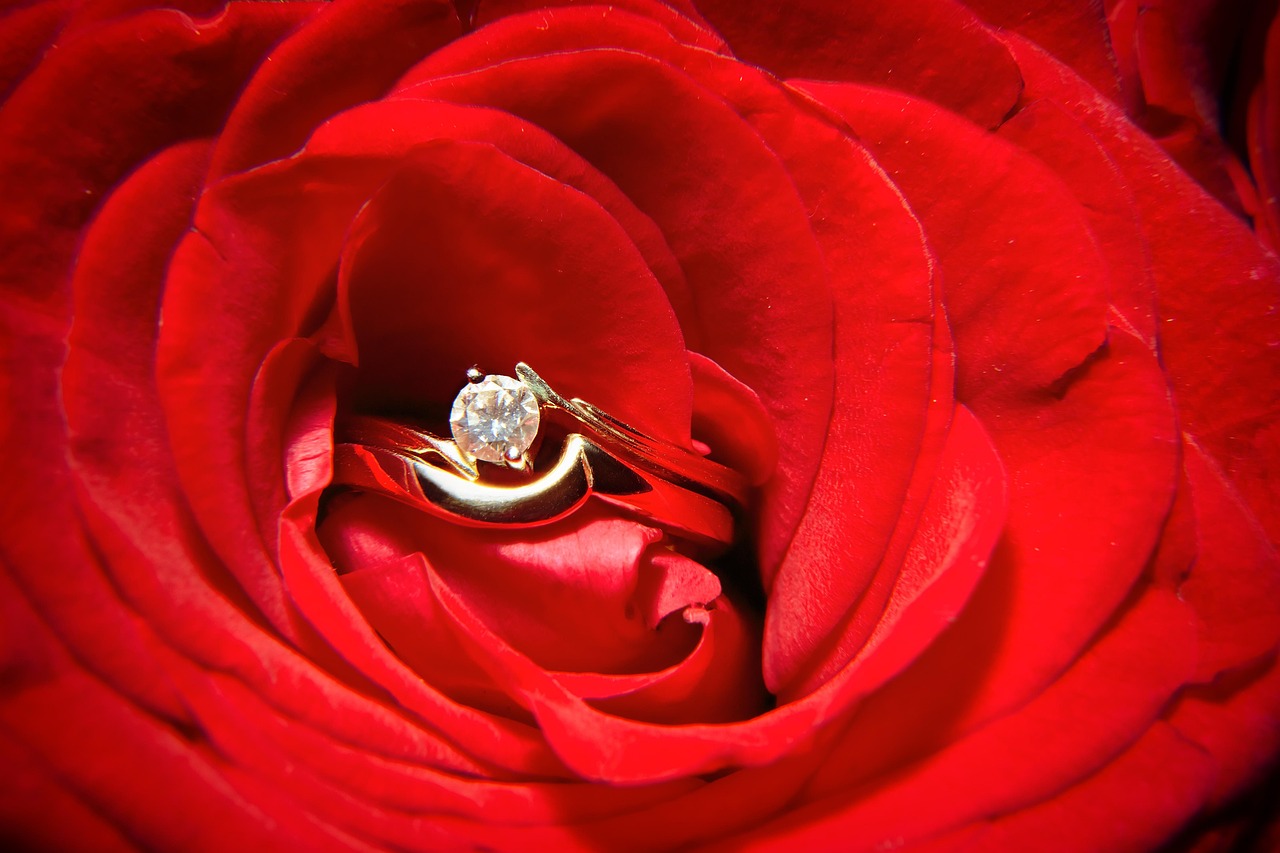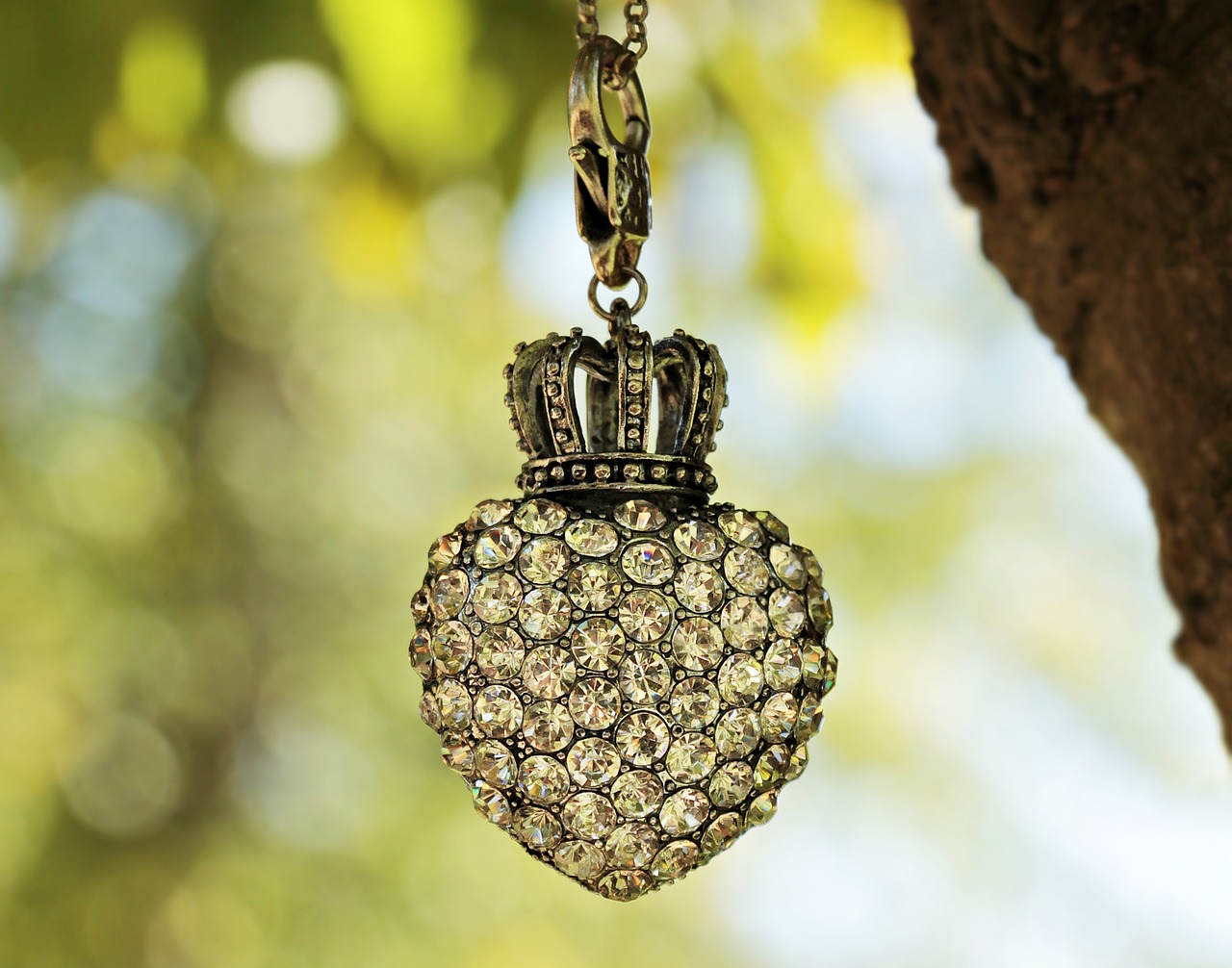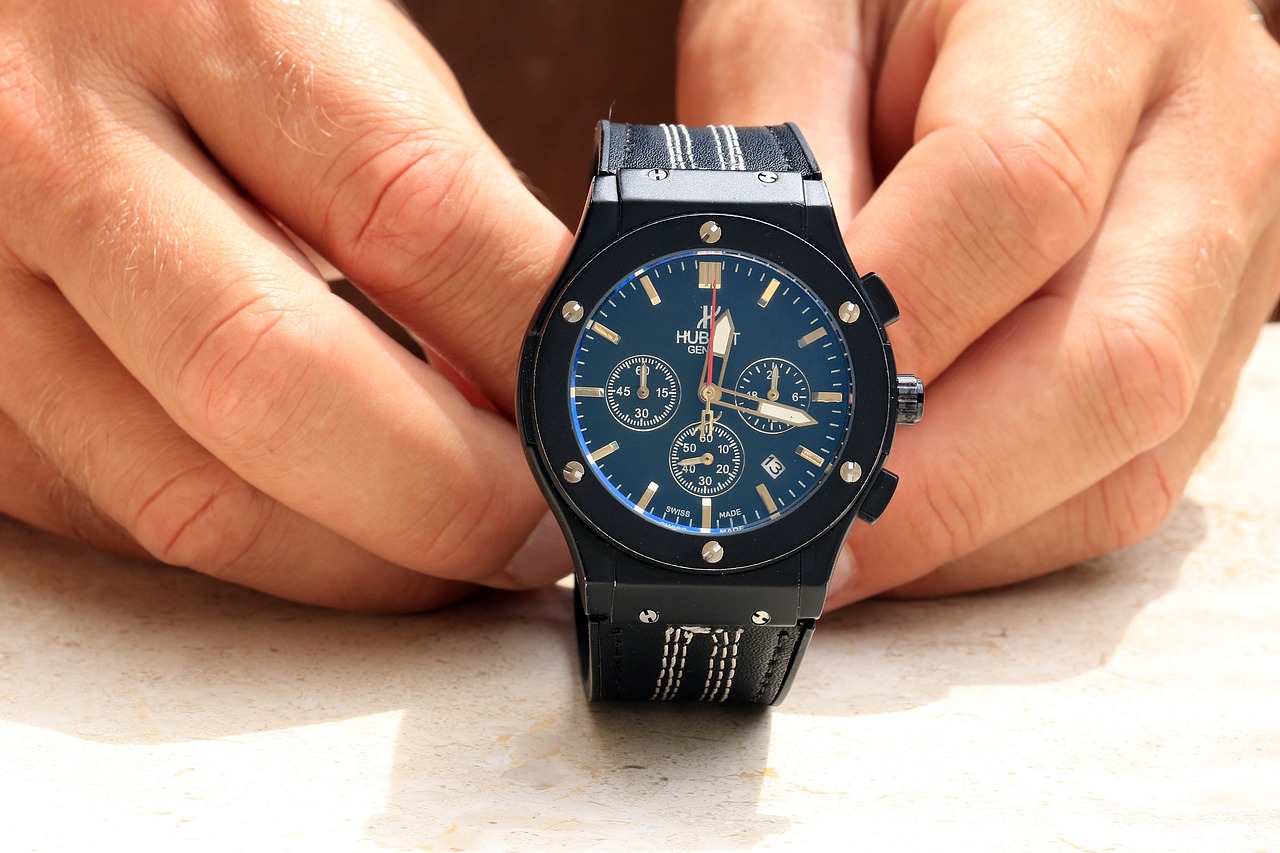Designing a custom engagement ring is a beautiful journey that allows you to create a piece that is not only stunning but also deeply personal. This guide will walk you through the essential steps to ensure that your ring reflects your unique love story. From selecting the right materials to incorporating personalized touches, every detail matters in crafting a truly one-of-a-kind engagement ring.
Understanding the fundamental steps involved in designing a custom engagement ring is crucial. The process typically includes:
- Concept Development: Start by gathering inspiration from various sources such as jewelry websites, social media, and personal experiences.
- Choosing a Jeweler: Find a reputable jeweler who specializes in custom designs. Look for reviews and examples of their previous work.
- Design Consultation: Work closely with your jeweler to sketch out your ideas, discussing styles, settings, and gemstones.
- Finalizing the Design: Once you have a design you love, your jeweler will create a 3D model or wax mold for your approval.
- Crafting the Ring: After approval, the jeweler will begin crafting your ring, ensuring every detail is perfect.
Selecting the right metal is vital for both aesthetic and practical reasons. Here are some popular options:
- Platinum: Known for its durability and hypoallergenic properties, platinum is a premium choice that offers a timeless look.
- Gold: Available in yellow, white, and rose variations, gold is versatile and can be customized to fit any style.
- Palladium: A lesser-known but excellent alternative to platinum, palladium is lightweight and resistant to tarnish.
Customization can elevate your ring from ordinary to extraordinary. Consider these options:
- Engravings: Adding a personal message or date can enhance the sentimental value of your ring.
- Unique Settings: Explore various settings such as halo, solitaire, or three-stone to create a distinctive look.
- Mixed Materials: Combining different metals or incorporating alternative gemstones can make your ring even more unique.
Finding a skilled jeweler is essential for bringing your vision to life. Here are some tips:
- Research: Look for jewelers with experience in custom designs and check their portfolios.
- Ask Questions: Don’t hesitate to ask about their process, materials, and warranties.
- Read Reviews: Customer feedback can provide insight into the jeweler’s reliability and quality of work.
Budgeting for a custom engagement ring can be challenging, but understanding the costs involved will help you plan effectively. Factors influencing the price include:
- Metal Choice: Different metals come with varying price tags, so choose according to your budget.
- Gemstone Selection: The type, size, and quality of the gemstone will significantly affect the overall cost.
- Design Complexity: More intricate designs may require additional labor, impacting the final price.
Designing a custom engagement ring is a rewarding experience that allows you to create a piece that symbolizes your unique relationship. By following these steps and considering various options, you can craft a ring that will be cherished for a lifetime.
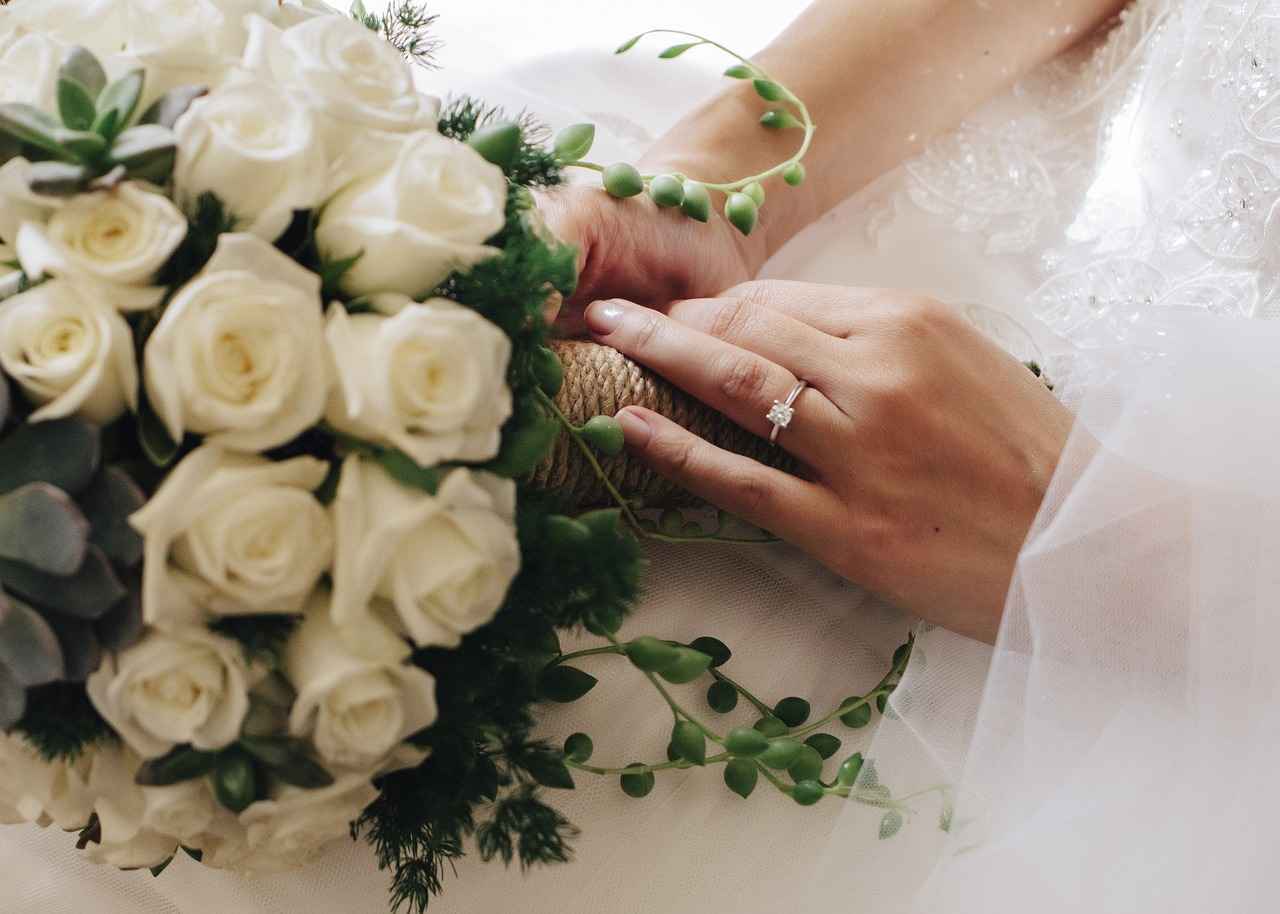
What Are the Key Steps in Designing a Custom Engagement Ring?
Designing a custom engagement ring is an exciting and meaningful journey that symbolizes your unique love story. Understanding the fundamental steps involved in this process is crucial for making informed decisions that reflect your partner’s style and preferences. This section will guide you through the entire process, from concept to completion, ensuring that your custom ring is not only beautiful but also deeply personal.
- Step 1: Define Your Budget – Before diving into design, it’s essential to establish a budget. Consider how much you can comfortably spend on the ring, keeping in mind that customization can vary significantly in price.
- Step 2: Gather Inspiration – Look for inspiration from various sources such as jewelry websites, social media platforms like Pinterest and Instagram, or even from your partner’s existing jewelry collection. Create a mood board to visualize your ideas.
- Step 3: Choose the Right Jeweler – Finding a skilled jeweler is vital for bringing your vision to life. Look for someone with experience in custom designs and positive customer reviews. Schedule consultations to discuss your ideas and gauge their expertise.
- Step 4: Select Your Metal – The choice of metal will significantly impact the ring’s look and durability. Popular options include platinum, white gold, yellow gold, and rose gold. Each metal has unique properties, so consider both aesthetics and practicality.
- Step 5: Choose the Perfect Gemstone – The gemstone is the centerpiece of the ring. While diamonds are traditional, consider other gemstones that may hold special meaning for you and your partner. Explore options like sapphires, emeralds, or even birthstones.
- Step 6: Design the Setting – The ring setting is crucial for both aesthetics and security. Decide on the type of setting that best showcases the gemstone, such as solitaire, halo, or three-stone settings. Each setting offers a different style and level of protection for the stone.
- Step 7: Personalize with Engravings – Adding a personal touch through engravings can make the ring even more special. Consider meaningful dates, initials, or a short phrase that resonates with your relationship.
- Step 8: Review and Finalize Design – Once you have all the elements in place, review the design with your jeweler. Ensure that every aspect aligns with your vision and make any necessary adjustments before finalizing the order.
By following these steps, you can confidently navigate the process of designing a custom engagement ring that truly reflects your love and commitment. Each decision you make, from the metal choice to the gemstone selection, contributes to a piece that is not only beautiful but also deeply meaningful. Take your time, communicate openly with your jeweler, and enjoy the journey of creating a ring that tells your unique story.
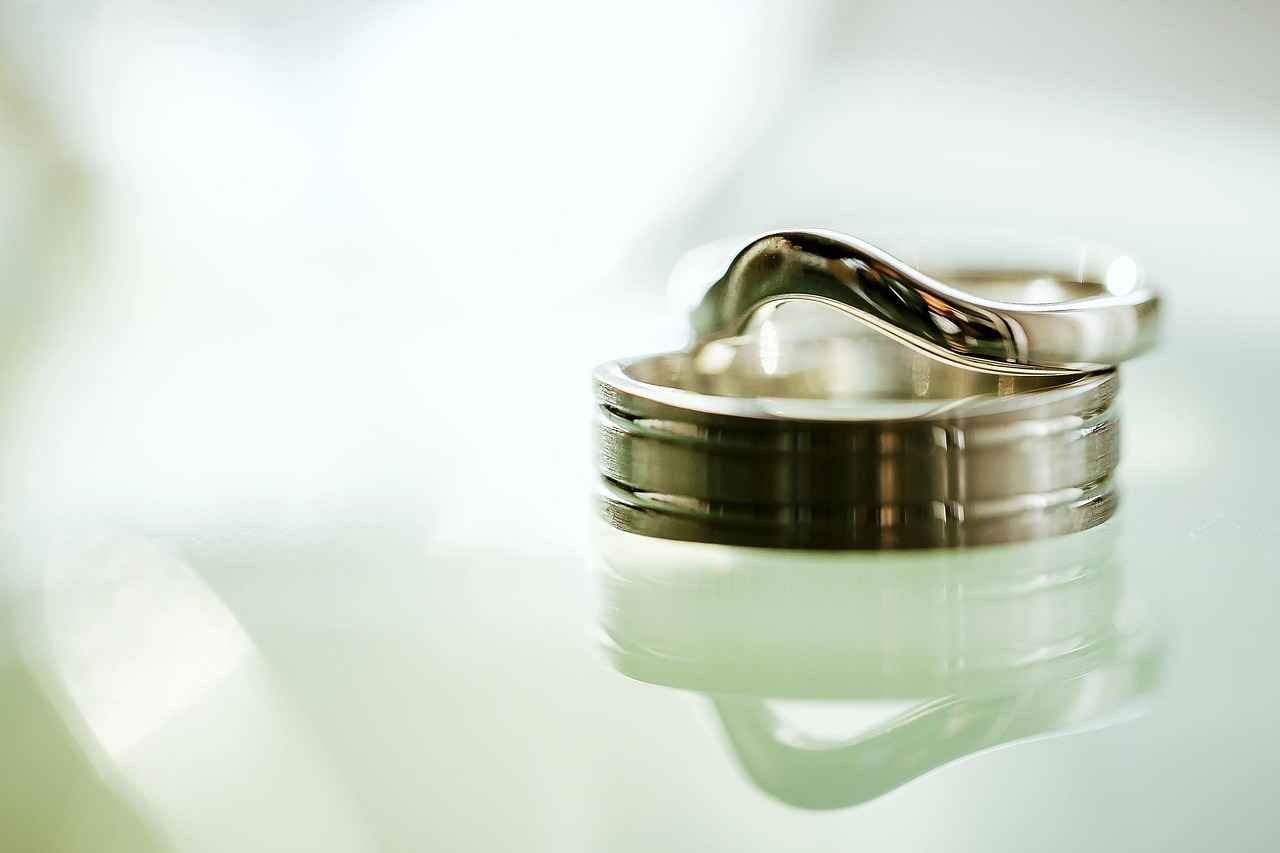
How Do You Choose the Perfect Metal for Your Ring?
When it comes to designing a custom engagement ring, one of the most critical decisions you’ll face is selecting the right metal. This choice not only influences the aesthetic appeal of the ring but also its durability and comfort for everyday wear. Understanding the characteristics of various metals can help you make an informed decision that aligns with both your style and practical needs.
There are several popular metals to consider when designing your engagement ring. Each metal has its own unique properties and benefits:
- Platinum: Known for its exceptional durability and hypoallergenic properties, platinum is a premium choice for engagement rings. Its natural white sheen enhances the brilliance of gemstones, making it a favorite among couples seeking a timeless look.
- Gold: Available in various colors such as yellow, white, and rose, gold is a versatile option. Yellow gold offers a classic appeal, while white gold provides a modern touch. Rose gold, with its warm tones, adds a romantic flair.
- Palladium: Similar to platinum, palladium is lightweight and resistant to tarnish. It is an excellent choice for those looking for a durable yet less expensive alternative to platinum.
Opting for platinum comes with numerous advantages. Its density and strength mean that it can withstand daily wear without losing its form. Additionally, platinum is naturally white, ensuring that it won’t fade or require rhodium plating like white gold. This makes it an ideal choice for those who want a ring that maintains its beauty over time.
Choosing between white gold and yellow gold can be challenging, as both have their unique charm:
- White Gold: Offers a sleek, modern look that pairs beautifully with diamonds and other gemstones. It is often alloyed with metals like nickel or palladium for added strength.
- Yellow Gold: Provides a classic and timeless appearance, often associated with traditional engagement rings. Its warm hue complements a variety of skin tones and styles.
Your lifestyle plays a significant role in selecting the right metal. If you lead an active life or work with your hands, you might prefer metals like platinum or palladium due to their strength and resistance to scratching. On the other hand, if you favor a more delicate design, white or yellow gold may be more suitable, though you should be mindful of their potential for wear over time.
The color of the metal can greatly influence the overall look of your engagement ring. Consider how the metal color complements your skin tone and the gemstones you choose. For example, rose gold can add a unique touch, while platinum and white gold offer a more contemporary aesthetic. Ultimately, the metal color should reflect your personal style while enhancing the beauty of the ring.
When investing in a custom engagement ring, it’s essential to ensure the quality of the metal. Look for reputable jewelers who provide certifications for their materials. This guarantees that you are receiving a genuine product, whether it’s platinum, gold, or another metal. Additionally, inquire about the alloy composition, as this can affect the ring’s durability and appearance.
In conclusion, choosing the right metal for your engagement ring is a multifaceted decision that requires careful consideration of aesthetic preferences, lifestyle, and quality. By understanding the characteristics and benefits of various metals, you can create a ring that is not only beautiful but also practical and enduring.
What Are the Most Popular Metal Options?
When it comes to selecting the perfect engagement ring, one of the most significant decisions you’ll make is choosing the right metal. The metal you select not only impacts the ring’s appearance but also its durability and overall value. In this section, we will explore the most popular metal options available for engagement rings: platinum, gold (both white and yellow), and palladium. Each of these metals has unique properties and benefits that cater to different preferences and lifestyles.
Platinum is often regarded as the premium choice for engagement rings due to its remarkable properties. It is incredibly durable, making it resistant to wear and tear. This means that a platinum ring can withstand daily activities without losing its luster. Additionally, platinum is hypoallergenic, which is ideal for those with sensitive skin. Its naturally white sheen does not fade over time, ensuring that your ring maintains its beauty for years to come.
Gold remains a classic choice for engagement rings, available in various colors, including yellow and white. Each type of gold has its unique appeal:
- Yellow Gold: Known for its warm, rich color, yellow gold is a traditional choice that symbolizes love and commitment. It pairs beautifully with a variety of gemstones.
- White Gold: This alloy, typically made from gold and other metals like palladium or nickel, offers a sleek, modern look. It is often plated with rhodium to enhance its shine and durability, although this plating may require periodic reapplication.
Both types of gold can be customized to suit individual tastes, making them versatile options for any engagement ring design.
Palladium, a member of the platinum group of metals, is gaining popularity for engagement rings. It shares many characteristics with platinum, such as being hypoallergenic and resistant to tarnishing. Palladium is lighter than platinum, which can make it more comfortable for everyday wear. Additionally, its natural white color does not require plating, ensuring that it remains low-maintenance while still providing a stunning appearance.
When deciding on the best metal for your engagement ring, consider the following factors:
- Durability: If you lead an active lifestyle, platinum or palladium may be the best options due to their strength.
- Allergies: If you have sensitive skin, hypoallergenic metals like platinum or palladium should be prioritized.
- Aesthetic Preferences: Choose a metal that complements your personal style and the gemstone you select.
- Budget: While platinum tends to be the most expensive option, both gold and palladium can offer beautiful alternatives at varying price points.
In conclusion, the choice of metal for your engagement ring is a personal decision that should reflect your unique style and lifestyle. Whether you gravitate towards the timeless elegance of gold or the modern appeal of platinum and palladium, understanding the properties and benefits of each metal will help you make an informed choice. Your engagement ring is not just a piece of jewelry; it is a symbol of your love story, and the right metal can enhance that sentiment beautifully.
Why Choose Platinum for Your Engagement Ring?
When it comes to selecting the perfect metal for an engagement ring, platinum stands out as a premier choice for many couples. Renowned for its exceptional durability and hypoallergenic properties, platinum offers a unique combination of beauty and resilience that makes it an ideal option for a custom engagement ring.
One of the most compelling reasons to choose platinum is its durability. Unlike other metals, platinum is incredibly strong and resistant to wear and tear. This means that your engagement ring will maintain its luster and integrity over time, making it a lasting symbol of your love. Additionally, platinum’s density gives it a heavier feel compared to other metals, which many people find appealing.
For those with sensitive skin or allergies to certain metals, platinum is a safe choice. Its hypoallergenic nature means it is less likely to cause skin irritations or allergic reactions, making it suitable for daily wear. This is particularly important for an engagement ring, which is often worn continuously.
When comparing platinum to other popular metals like gold, it becomes clear why many couples gravitate towards it. While gold can be mixed with other metals that might cause allergic reactions, platinum is a pure metal, typically containing 95% platinum and only 5% other metals. This purity not only enhances its hypoallergenic properties but also contributes to its brilliant shine.
In terms of aesthetics, platinum offers a timeless elegance that complements a variety of gemstones. Its natural white sheen enhances the sparkle of diamonds and other stones, making them appear more vibrant. Furthermore, platinum does not tarnish or fade, ensuring that your ring will continue to look stunning throughout the years.
Investing in a platinum engagement ring can also be a wise financial decision. Platinum is rarer than gold, which often translates to a higher resale value. Should you ever choose to sell or upgrade your ring, you can rest assured knowing that platinum rings typically hold their value better than those made from other metals.
Another appealing aspect of platinum is its versatility in design. Whether you prefer a classic solitaire setting or a more intricate design, platinum can be easily molded and shaped to match your vision. Additionally, its strength allows for more elaborate settings, providing greater security for your chosen gemstone.
Caring for a platinum engagement ring is relatively straightforward. Regular cleaning with mild soap and water will keep it looking its best. Unlike other metals, platinum does not require frequent polishing, making maintenance easy for couples who lead busy lives.
In summary, choosing platinum for your engagement ring is a decision rooted in both practicality and sentimentality. With its durability, hypoallergenic properties, and timeless beauty, platinum not only serves as a stunning representation of your love but also stands the test of time, making it a cherished piece for years to come.
What Are the Benefits of White Gold vs. Yellow Gold?
When it comes to choosing the perfect metal for your engagement ring, white gold and yellow gold are two of the most popular options. Each offers its own unique advantages, making the decision a matter of personal preference and style. In this section, we will explore the benefits of both metals to help you make an informed choice.
- Modern Aesthetic: White gold has a sleek, contemporary look that pairs beautifully with a variety of gemstones. Its silvery hue complements diamonds and colored stones alike, creating a stunning visual contrast.
- Durability: White gold is an alloy, typically composed of gold mixed with metals like palladium or nickel, which enhances its strength and durability. This makes it less prone to scratching and tarnishing, ideal for everyday wear.
- Rhodium Plating: Most white gold rings are plated with rhodium, a precious metal that adds an extra layer of shine and protection. This plating can be reapplied over time to maintain the ring’s luster.
- Timeless Appeal: Yellow gold has a classic and romantic charm that has been cherished for centuries. Its warm tones evoke a sense of tradition, making it a popular choice for engagement rings.
- Hypoallergenic Properties: Pure yellow gold is less likely to cause allergic reactions compared to white gold, which often contains nickel. This makes yellow gold a suitable option for those with sensitive skin.
- Easy to Maintain: Yellow gold is relatively easy to care for. Unlike white gold, it does not require rhodium plating, which means it maintains its color and shine more naturally over time.
The choice between white gold and yellow gold ultimately depends on your personal style and preferences. Consider the following factors:
- Skin Tone: Yellow gold tends to complement warmer skin tones, while white gold often suits cooler skin tones better.
- Gemstone Color: Think about the color of the gemstone you plan to use. White gold enhances the brilliance of diamonds, while yellow gold can add warmth to colored stones.
- Style Preferences: If you prefer a modern, sleek look, white gold may be your best bet. For a more classic, vintage feel, yellow gold is an excellent choice.
In conclusion, both white gold and yellow gold have their distinct advantages, making them suitable for different styles and preferences. Understanding the benefits of each metal can help you choose the one that best reflects your unique taste and love story.
How Do You Select the Right Gemstone?
When it comes to designing a custom engagement ring, one of the most significant decisions you’ll make is selecting the right gemstone. This choice not only enhances the ring’s beauty but also adds a personal touch that reflects your unique love story. In this section, we will explore various gemstones, their meanings, and how they can influence your decision.
The gemstone is often the centerpiece of an engagement ring, symbolizing love, commitment, and individuality. Choosing a gemstone that resonates with your partner’s personality and preferences can make the ring truly special. Here are some popular gemstone options to consider:
- Diamond: The classic choice, diamonds symbolize eternal love and strength. Their brilliance and durability make them ideal for everyday wear.
- Sapphire: Available in various colors, sapphires are known for their deep blue hues. They represent wisdom, loyalty, and nobility, making them a meaningful choice for engagement rings.
- Emerald: With their vibrant green color, emeralds symbolize rebirth and love. They are perfect for those who appreciate unique and striking gemstones.
- Ruby: The fiery red of rubies signifies passion and desire. This gemstone is an excellent choice for those who want a bold and romantic statement.
- Amethyst: This purple gemstone is associated with tranquility and balance. Amethysts are perfect for those who prefer a more unconventional look.
Each gemstone carries its own unique symbolism and meaning, which can enhance the emotional significance of your engagement ring. Here’s a brief overview of what some popular gemstones represent:
| Gemstone | Meaning |
|---|---|
| Diamond | Strength, eternity, love |
| Sapphire | Wisdom, loyalty, nobility |
| Emerald | Rebirth, love, fertility |
| Ruby | Passion, desire, courage |
| Amethyst | Tranquility, balance, peace |
Beyond the type of gemstone, the color and cut of the stone are also crucial in creating a stunning engagement ring. The color should resonate with your partner’s style, while the cut affects the stone’s brilliance and overall appearance. Consider the following:
- Color: Choose a color that complements your partner’s skin tone and personal style.
- Cut: The cut of the gemstone can enhance its sparkle. Popular cuts include round, princess, oval, and cushion.
When selecting a gemstone, it’s important to consider its quality. Look for reputable jewelers who provide certifications for their stones. This ensures that you are getting a genuine gemstone with the quality you desire. Additionally, consider the four Cs: cut, color, clarity, and carat weight. These factors will help you assess the value and beauty of the gemstone.
In summary, selecting the right gemstone for your engagement ring is a vital step in personalizing your piece. By understanding the meanings behind different stones, considering their quality, and choosing a color and cut that resonates with your partner, you can create a truly unique symbol of your love.
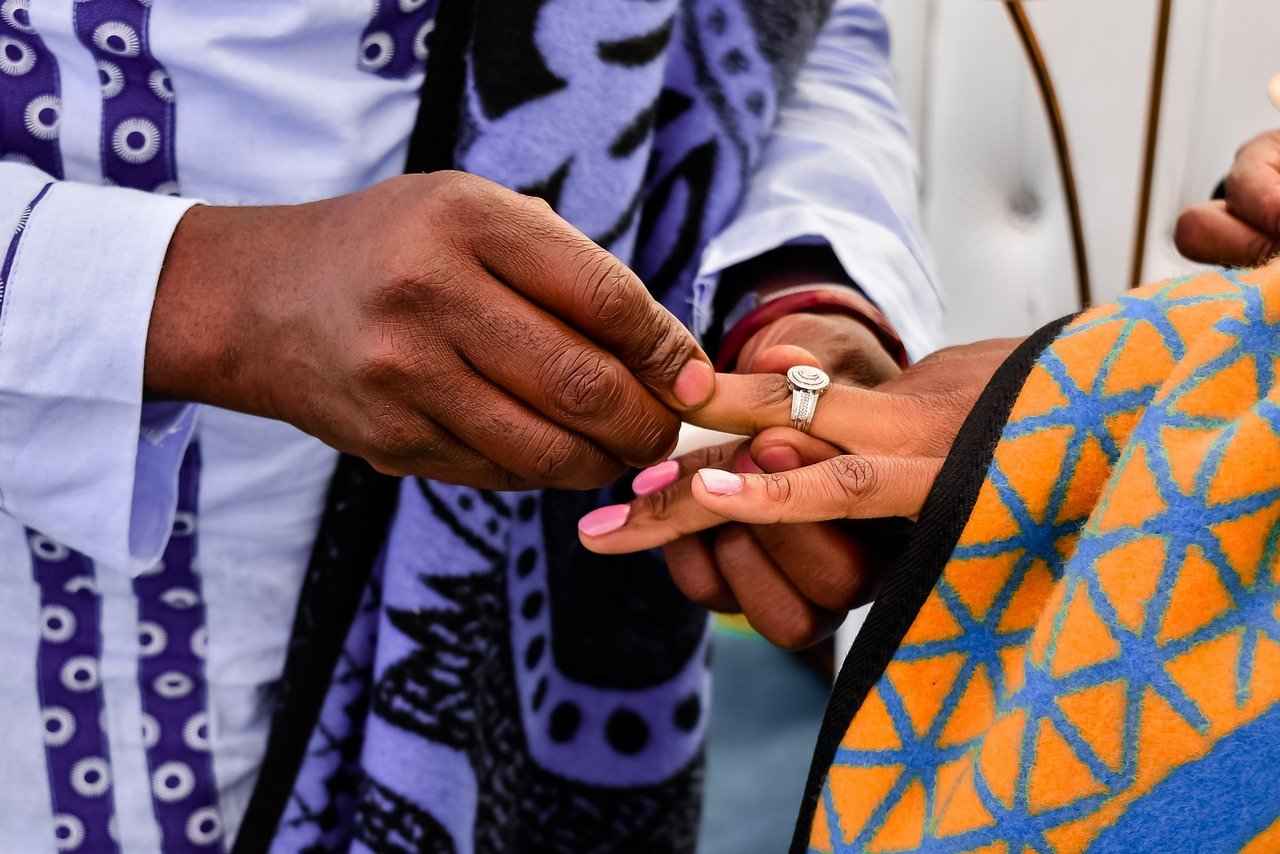
What Customization Options Are Available for Engagement Rings?
When it comes to engagement rings, customization allows couples to create a piece that truly symbolizes their unique love story. By incorporating personal touches, you can transform a standard ring into a breathtaking masterpiece. This section explores various customization options that can elevate your engagement ring from ordinary to extraordinary.
- Ring Settings: The setting of your ring not only determines how the gemstone is displayed but also affects its overall style. Popular settings include solitaire, halo, and three-stone designs. Each setting offers a unique way to showcase the center stone and adds to the ring’s character.
- Gemstone Selection: While diamonds are traditional, many couples opt for alternative gemstones such as sapphires, emeralds, or moissanite. Each gemstone carries its own meaning and aesthetic, allowing for a more personalized touch.
- Engravings: Adding an engraving is a heartfelt way to make your ring uniquely yours. You can engrave initials, a significant date, or a meaningful quote. This small detail can add immense sentimental value to the piece.
- Metal Choices: The choice of metal can significantly impact the look and feel of the ring. Options such as platinum, white gold, yellow gold, and rose gold each offer different aesthetics and durability. Consider how the metal complements both the gemstone and your personal style.
- Accent Stones: Incorporating smaller accent stones around the main gemstone can add extra sparkle and dimension to your ring. These stones can be chosen to match the center stone or can be a mix of different gemstones to create a vibrant look.
The ring setting is crucial not only for aesthetics but also for the security of the gemstone. Different settings can enhance the overall design while providing varying levels of protection for the stone. For instance, a prong setting allows more light to enter the gemstone, enhancing its brilliance, while a bezel setting offers more security by encasing the stone in metal.
Engravings are a wonderful way to add a personal touch to your engagement ring. They can serve as a daily reminder of your love and commitment. Whether it’s a simple date or a phrase that holds special meaning, engravings can make your ring feel more intimate and unique.
Finding the right jeweler is essential for executing your vision. Look for jewelers who specialize in custom designs and have a portfolio showcasing their work. A skilled jeweler will guide you through the customization process, providing insights on materials and techniques to ensure your ring is crafted to perfection.
Customizing an engagement ring can vary significantly in cost. Factors such as the choice of metal, the complexity of the design, and the type of gemstones selected will all influence the final price. It’s important to establish a budget beforehand and communicate this with your jeweler to explore options that align with your financial plan.
In conclusion, customizing your engagement ring is a wonderful opportunity to create a piece that reflects your love and individuality. By considering various design elements such as settings, engravings, and gemstone choices, you can craft a ring that is not only beautiful but also deeply meaningful.
How Important Is the Ring Setting?
The ring setting is a crucial aspect of any engagement ring, as it not only enhances the aesthetic appeal but also ensures the security of the gemstone. Understanding the various types of settings available can help you make an informed decision that aligns with your personal style and the significance of the piece. Below, we explore the different types of ring settings and their impact on design.
- Prong Setting: This is one of the most popular settings, featuring metal prongs that hold the gemstone in place. It allows for maximum light exposure, enhancing the stone’s brilliance.
- Bezel Setting: In this setting, the gemstone is encircled by a metal rim, providing a secure hold. This style is ideal for those who lead an active lifestyle, as it minimizes the risk of the stone being knocked loose.
- Channel Setting: This design features a row of gemstones set into a channel of metal, creating a sleek and modern look. It is perfect for adding smaller stones alongside a central gemstone.
- Pavé Setting: Small diamonds or gemstones are set closely together, with minimal visibility of the metal. This creates a sparkling effect that enhances the overall design of the ring.
- Halo Setting: A central gemstone is surrounded by a “halo” of smaller stones, which not only adds to the visual impact but also makes the center stone appear larger.
The choice of setting can dramatically alter the overall appearance of the engagement ring. For example, a prong setting offers a classic and timeless look, while a halo setting can provide a more contemporary and glamorous flair. Additionally, the setting can influence the ring’s profile and how it sits on the finger, which is an essential consideration for comfort and wearability.
When selecting a ring setting, consider the following factors:
- Style: Reflect on your personal style and the recipient’s preferences. Do they lean towards classic elegance or modern chic?
- Durability: Some settings, like the bezel, offer more protection for the stone, while others may expose it more to potential damage.
- Maintenance: Certain settings may require more upkeep than others. For example, pavé settings might need more frequent cleaning to maintain their sparkle.
- Budget: The complexity of the setting can impact the overall cost of the ring. Be sure to align your choice with your budget.
The security of the gemstone is paramount when designing an engagement ring. A well-chosen setting can ensure that the stone remains securely in place, reducing the risk of loss. For instance, a bezel setting is often favored for its protective qualities, making it an excellent choice for individuals with an active lifestyle. In contrast, while a prong setting allows for more light and brilliance, it may require more vigilance to ensure the prongs remain intact.
In conclusion, the ring setting is a vital component of an engagement ring that influences both its aesthetic and functional attributes. By understanding the various options and considerations, you can select a setting that not only showcases the gemstone beautifully but also aligns with your unique style and lifestyle needs.
What Are the Benefits of Adding Personal Engravings?
Engravings can transform a standard engagement ring into a deeply personal symbol of love and commitment. By incorporating unique messages, symbols, or dates, you can create a ring that tells your story. This section explores the various engraving options available and their significance in making your ring truly unique.
Engravings offer a sentimental touch that can enhance the emotional value of your ring. They serve as a constant reminder of the love you share and the promises you make. Whether it’s a special date, a meaningful phrase, or a unique symbol, engravings can make your ring distinctly yours.
- Initials: Engraving your initials or those of your partner is a classic choice that adds a personal flair.
- Significant Dates: Consider engraving the date of your engagement or another meaningful date that holds significance for both of you.
- Meaningful Quotes: A short phrase or quote that resonates with your relationship can be a beautiful addition.
- Symbols: Custom symbols, such as hearts, infinity signs, or even custom designs, can add a unique touch to your ring.
Engravings not only personalize your ring but also serve as a lasting testament to your relationship. Each time you or your partner glance at the ring, the engraved message will evoke cherished memories and feelings. This emotional connection is what truly makes your engagement ring special.
Engravings can be placed in various locations on the ring, depending on your design preferences:
- Inside the Band: The most common location for engravings, providing a private message that only you and your partner can see.
- Outside the Band: For a more visible engraving, you can choose to have a message or symbol engraved on the outer surface of the ring.
- On the Stone Setting: If your ring features a prominent gemstone, consider engraving the setting itself for a unique twist.
Before deciding on an engraving, keep the following factors in mind:
- Font Style: Choose a font that complements the design of the ring and is legible.
- Length of the Message: Ensure your message is concise enough to fit comfortably without overwhelming the design.
- Jeweler’s Expertise: Work with a jeweler who specializes in engravings to ensure high-quality results.
While engravings are typically permanent, some jewelers offer services to alter or remove them if needed. However, this can sometimes affect the integrity of the ring, so it’s best to choose your engraving carefully from the start.
In summary, adding a personal engraving to your engagement ring is a simple yet profound way to enhance its meaning and uniqueness. By considering the various options available and the emotional significance of your chosen message, you can create a ring that truly represents your love story.

How Do You Find the Right Jeweler for Custom Design?
Finding the right jeweler for your custom engagement ring is a crucial step in bringing your vision to life. A skilled jeweler not only possesses the technical expertise but also understands your unique style and preferences. This section outlines essential tips to help you choose the best professional for your custom engagement ring project.
When searching for a jeweler, it’s important to consider their qualifications and experience. Look for professionals who are certified by recognized organizations such as the Gemological Institute of America (GIA) or the American Gem Society (AGS). These certifications indicate that the jeweler has undergone rigorous training and adheres to industry standards.
Reviewing a jeweler’s portfolio is an effective way to gauge their craftsmanship and style. A reputable jeweler should have a collection of previous work, showcasing a variety of designs. Pay attention to the details, such as the quality of the settings and the precision of the gemstone placement. This will give you insight into their ability to execute your vision.
Reading customer reviews can provide valuable information about a jeweler’s reputation and reliability. Look for testimonials on their website, social media, or third-party review platforms. Positive feedback from previous clients often indicates a jeweler’s commitment to quality and customer satisfaction.
Effective communication is essential when working with a jeweler. During your initial consultation, assess how well they listen to your ideas and respond to your questions. A good jeweler should be open to discussing your preferences and offering suggestions that align with your vision.
Understanding pricing is crucial when selecting a jeweler. Custom engagement rings can vary significantly in cost, depending on factors such as materials and design complexity. Ask for a detailed breakdown of costs and ensure that the jeweler is transparent about pricing. This will help you avoid any unexpected expenses later on.
Aftercare and warranty options are vital considerations when choosing a jeweler. Inquire about their policies on repairs, maintenance, and resizing. A jeweler who offers a warranty demonstrates confidence in their craftsmanship and is committed to ensuring your satisfaction long after the purchase.
Choosing a local jeweler can have its advantages. Not only can you meet in person to discuss your design, but local jewelers often have a strong reputation within the community. Additionally, supporting local businesses can foster a more personal relationship, making the design process more enjoyable.
- What is your design process like?
- Can you provide references or testimonials from previous clients?
- What materials do you recommend for my design?
- How long will the custom design process take?
- Do you offer a warranty or aftercare services?
By considering these factors, you can make an informed decision when selecting a jeweler for your custom engagement ring. This careful approach will help ensure that your ring not only meets your expectations but also becomes a cherished symbol of your love.
What Should You Look for in a Jeweler?
When embarking on the journey to design a custom engagement ring, selecting the right jeweler is a pivotal step. The jeweler you choose will not only influence the quality of the final product but also the overall experience of creating a ring that symbolizes your unique love story. Below, we delve into the essential factors to consider when selecting a jeweler for your custom design.
Experience plays a crucial role in the jewelry-making process. An experienced jeweler will not only possess the technical skills required for crafting intricate designs but also the ability to understand and interpret your vision accurately. Look for a jeweler who has a solid portfolio showcasing their previous work, as this can provide insight into their style and craftsmanship.
Certifications can serve as a testament to a jeweler’s expertise and professionalism. Reputable jewelers often hold certifications from recognized organizations, such as the Gemological Institute of America (GIA) or the American Gem Society (AGS). These credentials indicate that the jeweler has undergone rigorous training and adheres to high industry standards.
Before committing to a jeweler, it’s wise to research their reputation. Online reviews and testimonials from previous clients can provide valuable insights into their customer service and craftsmanship. Look for patterns in feedback—consistent praise or complaints can be telling of what you can expect.
A jeweler’s ability to offer a range of customization options is essential for creating a unique piece. Inquire about the materials they work with, the types of gemstones available, and the various settings they can provide. A jeweler who is flexible and open to your ideas will enhance the collaborative process of designing your ring.
Quality craftsmanship should be non-negotiable when selecting a jeweler. Examine their work closely; details such as the precision of the setting, the finish of the metal, and the overall design integrity are crucial indicators of quality. Don’t hesitate to ask about the techniques they use and the materials they prefer.
Effective communication is vital throughout the design process. Your jeweler should be approachable and willing to listen to your ideas, concerns, and preferences. A jeweler who communicates clearly and promptly will help ensure that your vision is realized and that any adjustments can be made along the way.
While it’s important to stay within your budget, the cheapest option is not always the best. Understand the pricing structure of the jeweler and what factors contribute to the cost. A transparent jeweler will provide a breakdown of costs, helping you make informed decisions without compromising on quality.
Aftercare services are an often-overlooked aspect of choosing a jeweler. Inquire whether the jeweler offers maintenance services, such as cleaning and repairs. A jeweler who stands behind their work will provide ongoing support, ensuring that your ring remains as beautiful as the day you first wore it.
In summary, selecting the right jeweler involves careful consideration of their experience, certifications, customer reviews, and quality of craftsmanship. By taking the time to evaluate these factors, you can ensure that your custom engagement ring is a true reflection of your love story.
How Can You Ensure Quality Craftsmanship?
When investing in a custom engagement ring, quality craftsmanship is essential for ensuring the longevity and beauty of your piece. A well-crafted ring not only enhances its aesthetic appeal but also guarantees that it withstands the test of time. This section will guide you through the key aspects to consider when assessing the quality of work and materials used by a jeweler.
- Attention to Detail: Examine the intricacies of the ring. High-quality craftsmanship is evident in the fine details, such as the precision of the setting and the smoothness of the band.
- Material Quality: The choice of materials significantly impacts the durability of your ring. Ensure that the jeweler uses high-grade metals and genuine gemstones.
- Finish and Polish: A well-finished ring should have a smooth surface without any scratches or imperfections. The polish enhances the ring’s brilliance and shine.
Before committing to a jeweler, consider the following methods to evaluate their work:
- Portfolio Review: Request to see previous work. A reputable jeweler should have a portfolio showcasing their craftsmanship and design style.
- Customer Reviews: Look for testimonials and reviews from past clients. Positive feedback can provide insight into the jeweler’s reliability and quality.
- Certifications: Check if the jeweler holds any certifications from recognized organizations. This can be a strong indicator of their professionalism and skill.
Understanding the materials used in your ring is crucial. Here are some tips:
- Metals: Opt for metals like platinum, gold, or palladium. Each has unique properties that affect durability and appearance.
- Gemstones: Ensure that the gemstones are ethically sourced and graded for quality. Look for certifications from gemological laboratories.
The setting of your ring plays a critical role in both its design and security. A well-crafted setting will securely hold the gemstone while enhancing its visual appeal. Here are some popular settings:
- Prong Setting: This classic setting allows maximum light to enter the gemstone, enhancing its sparkle.
- Bezel Setting: Offers a modern look while providing excellent protection for the stone.
- Halo Setting: Surrounds the center stone with smaller diamonds, creating an illusion of a larger centerpiece.
Quality craftsmanship should be backed by a warranty. A reliable jeweler will offer a warranty covering repairs or maintenance, ensuring your ring remains in excellent condition over time. Additionally, inquire about aftercare services, such as cleaning and inspections, to keep your ring looking its best.
In summary, ensuring quality craftsmanship in your custom engagement ring involves careful evaluation of the jeweler’s work, the materials used, and the overall design. By taking the time to assess these factors, you can make an informed decision that reflects your personal style and love story.
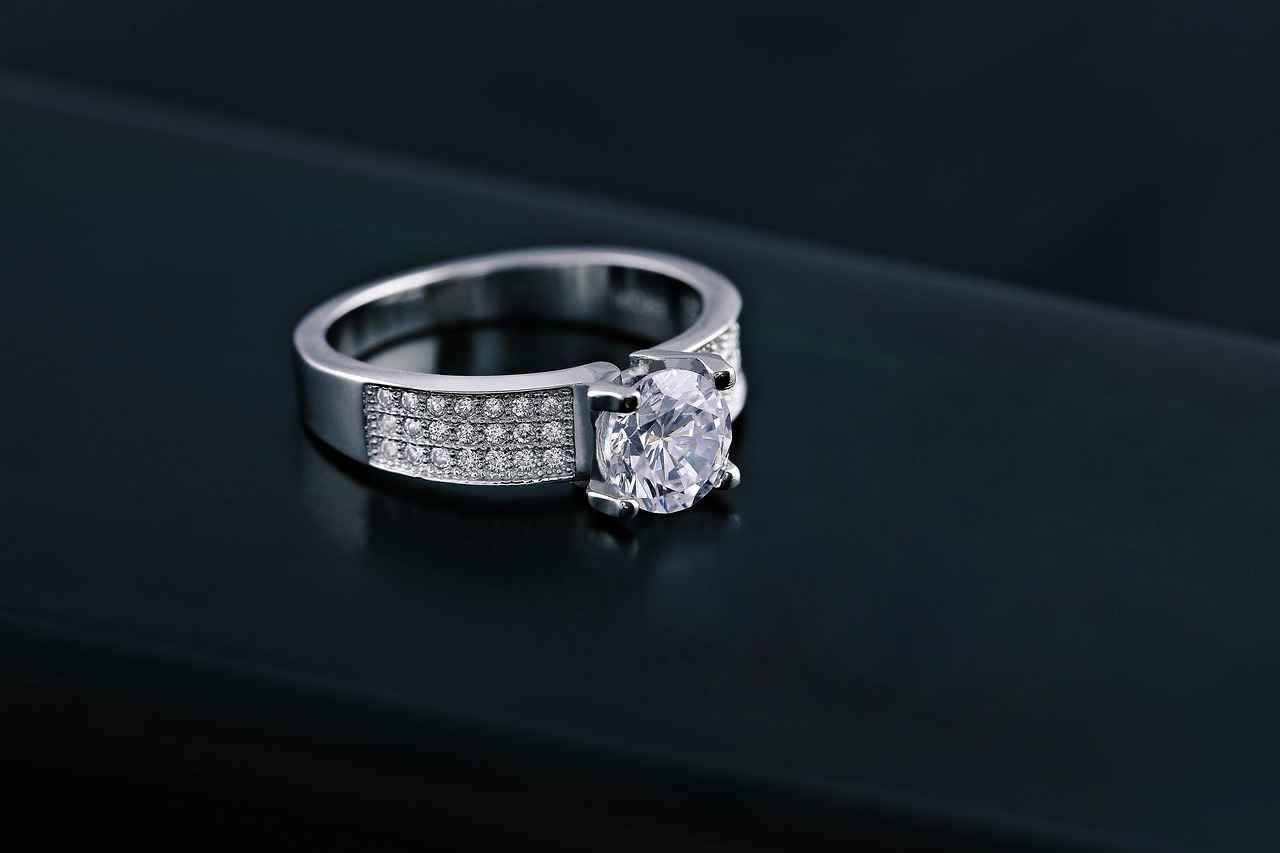
What Is the Average Cost of a Custom Engagement Ring?
When it comes to designing a custom engagement ring, understanding the financial aspect is crucial. The average cost of a custom engagement ring can vary significantly based on several factors, including the choice of materials, gemstones, and design complexity. This section aims to provide a comprehensive breakdown of the costs involved and offers practical tips to help you stay within your budget while achieving your desired design.
Budgeting for a custom engagement ring can be challenging, but knowing the key components can make the process easier. Here are the primary factors that influence the overall cost:
- Metal Choice: The type of metal you choose plays a significant role in the cost. Options like platinum and gold have different price points, with platinum typically being more expensive due to its durability and rarity.
- Gemstone Selection: The choice of gemstone is another major factor. Diamonds are the traditional choice, but alternative gemstones like sapphires and emeralds can offer unique aesthetics at varying prices.
- Design Complexity: The intricacy of your ring design can also affect the cost. More detailed designs often require more labor and time, which can increase the overall price.
While it’s easy to get carried away with the possibilities of a custom ring, there are several strategies to help you manage your budget effectively:
- Set a Clear Budget: Before you start the design process, establish a budget that you are comfortable with. This will serve as a guideline throughout the process.
- Consider Alternative Gemstones: Opting for a less traditional gemstone can significantly reduce costs without sacrificing beauty. Consider stones like moissanite or lab-created diamonds for a more budget-friendly option.
- Limit Customization: While customization is key to a unique design, limiting the number of custom features can help keep costs down. Focus on one or two personalized elements that truly matter to you.
- Shop Around: Don’t settle for the first jeweler you find. Take the time to compare prices and services from different jewelers to ensure you get the best value.
Custom engagement rings don’t have to break the bank. Here are some creative and budget-friendly ideas to personalize your ring:
- Simple Engravings: Adding a meaningful date or phrase can make your ring special without a high cost.
- Unique Settings: Choosing a less common setting style can enhance the ring’s look without significantly increasing the price.
- Mix and Match Metals: Combining different metals can create a stunning effect while potentially lowering the cost of the more expensive metal.
By understanding the various factors that influence the cost of a custom engagement ring and implementing these budget-friendly strategies, you can create a stunning piece that reflects your unique love story without overspending. Remember, the goal is to design a ring that is meaningful to you and your partner, and with careful planning, it is entirely possible to achieve this within your budget.
How Do Different Factors Influence the Price?
When it comes to designing a custom engagement ring, understanding the factors that influence pricing is essential. Several elements can significantly affect the overall cost, from the choice of metal to the intricacies of the design. In this section, we will delve into these factors to help you make informed decisions.
The metal you choose for your engagement ring can greatly impact its cost. Different metals have varying prices based on their rarity, durability, and aesthetic appeal. For example:
- Platinum: Known for its strength and hypoallergenic properties, platinum is often the most expensive option. Its durability ensures that your ring will last a lifetime.
- Gold: Available in various colors such as yellow, white, and rose, gold is a popular choice. The price can vary depending on the karat (purity) and the market value.
- Palladium: A less common but increasingly popular choice, palladium is lighter than platinum and offers a similar appearance at a lower cost.
The gemstone you select is another crucial factor in determining the price of your custom ring. The cost of gemstones can vary widely based on their type, quality, and size. Consider the following:
- Diamonds: Often the first choice for engagement rings, diamonds are graded based on the 4 Cs: cut, color, clarity, and carat weight. Higher quality diamonds can significantly increase the overall cost.
- Alternative Gemstones: Options like sapphires, emeralds, and rubies can provide unique aesthetics at a lower price point compared to diamonds. Their rarity and quality will also affect pricing.
The complexity of the design is another significant factor influencing the price of your ring. Custom designs that require intricate detailing, multiple stones, or unique settings will generally cost more due to the increased labor and skill required. Here are some aspects to consider:
- Intricate Settings: Designs that feature elaborate settings or multiple stones can drive up costs due to the additional craftsmanship involved.
- Engravings: Personal engravings add a sentimental touch but can also increase the price depending on the complexity of the design.
While it’s essential to create a ring that reflects your unique love story, staying within budget is also important. Here are some tips to help you manage costs:
- Prioritize Your Preferences: Determine which elements are most important to you—whether it’s the metal, gemstone, or design. This will help you allocate your budget effectively.
- Consider Alternative Gemstones: If diamonds are beyond your budget, explore other beautiful gemstones that can offer a unique look without the high price tag.
- Choose a Simple Design: A simpler design can still be stunning and elegant. It often requires less labor, helping you save on costs.
By understanding these factors and making informed choices, you can create a stunning custom engagement ring that fits your vision and budget. Remember, the most important aspect is that your ring represents your unique love story, regardless of the price tag.
What Are Some Budget-Friendly Customization Ideas?
When it comes to designing a custom engagement ring, many couples worry that personalizing their ring will lead to overspending. Fortunately, there are numerous budget-friendly customization ideas that allow you to create a unique piece without breaking the bank. This section explores some creative options that can add a personal touch to your engagement ring while staying within your budget.
While diamonds are the traditional choice for engagement rings, there are many alternative gemstones that can be both stunning and affordable. Options like moissanite, sapphire, and morganite not only offer unique colors and meanings but also come at a fraction of the cost of diamonds. For example:
- Moissanite: Known for its brilliance, it is often more affordable than diamonds.
- Sapphire: Available in various colors, sapphires can be a beautiful and durable choice.
- Morganite: This peach-hued gemstone is trendy and offers a romantic feel.
The ring setting can significantly impact the overall cost of your engagement ring. Opting for a simpler setting can save you money while still allowing your chosen gemstone to shine. Consider styles like:
- Solitaire: A classic choice that highlights the center stone.
- Bezel Setting: Provides a modern look while securing the gemstone.
- Halo Setting: Surrounds the center stone with smaller stones, creating a stunning visual effect without excessive cost.
Adding a personal touch through engraving can make your ring truly unique. Whether it’s a special date, initials, or a meaningful phrase, engravings can enhance the sentimental value of your ring without significant cost. Consider these engraving ideas:
- Dates: Engrave the date of your proposal or another significant moment.
- Initials: Combine your initials for a personal touch.
- Quotes: A short phrase that holds special meaning to both of you.
Instead of committing to one type of metal, consider mixing and matching different metals for a unique look. For example, pairing white gold with rose gold can create a stunning contrast and add visual interest without a hefty price tag. This approach allows you to personalize your ring while potentially saving on costs.
Not all jewelers offer the same prices or quality. Take the time to shop around and compare prices from various jewelers. Look for sales, promotions, or even consider purchasing online, where prices may be more competitive. Remember to check reviews and ratings to ensure you’re getting quality craftsmanship.
In conclusion, creating a custom engagement ring that reflects your love story doesn’t have to be an expensive endeavor. By exploring alternative gemstones, opting for simpler settings, personalizing with engravings, mixing metals, and shopping wisely, you can design a beautiful ring that fits your budget. Embrace your creativity, and let your ring tell your unique story.
Frequently Asked Questions
- What is the first step in designing a custom engagement ring?
The first step is brainstorming your ideas! Think about the style, shape, and personal elements that represent your love story. Sketching out your thoughts can really help bring your vision to life.
- How do I choose the right metal for my ring?
Choosing the right metal involves considering both aesthetics and durability. Options like platinum offer strength and hypoallergenic properties, while gold comes in various colors to match different styles. Think about what feels right for you!
- What gemstone should I select for my engagement ring?
Your gemstone should reflect your personality and preferences. Diamonds are classic, but don’t overlook sapphires or emeralds! Each stone has its own meaning, so pick one that resonates with your journey together.
- Can I personalize my ring with engravings?
Absolutely! Engravings can add a special touch, whether it’s a meaningful date or a short phrase. It’s a beautiful way to make your ring uniquely yours!
- How do I find a reliable jeweler for my custom design?
Look for jewelers with good reviews and a solid portfolio. Don’t hesitate to ask about their experience with custom designs. A trustworthy jeweler will be excited to help you create your dream ring!
- What factors influence the cost of a custom engagement ring?
Several factors can affect the price, including the type of metal, gemstone choice, and the complexity of the design. It’s essential to set a budget and communicate it with your jeweler to find the best options!

